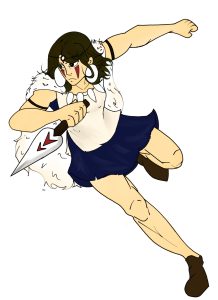New design grants awarded to faculty members for development of open educational resources
UTSA Libraries has been offering grants for OER implementation since 2016.
November 7, 2022
As part of its Adopt a Free Textbook Initiative, UTSA libraries awarded 13 grants to faculty members for the 2022-2023 academic cycle to incorporate Open Educational Resources (OERs) into their curriculum. Four of the 13 grants were awarded to faculty members to develop their OERs.
An OER is any openly licensed educational resource that is available free of cost in the public domain, including free textbooks. The Adopt a Free Textbook Initiative, launched in 2016, aims to encourage faculty members to use OERs to defer textbook costs for students.
“[The advantage of an OER is that] it doesn’t cost the student anything,” Dean Hendrix, university librarian at UTSA, said. “They have the resource before the class starts, they have the resource during the class and they have the resource after the class.”
UTSA faculty members can apply for an Adopt a Free Textbook grant every year. Applications are assessed based on the course being taught, the cost of the textbook and the number of students impacted. Faculty can apply for individual grants as well as group grants.
Awarded faculty members receive grant money which can be “used to support professional development, to purchase materials/supplies that support teaching, or to fund student work on the proposed project.” In return, faculty members must adopt an OER — usually a free textbook — into their course for four consecutive semesters. All OERs used are required to be licensed by Creative Commons, a nonprofit that allows for the open licensing of intellectual content.
Until last year, the initiative only offered grants for adopting pre-existing OERs; however, 2022 is the first year that the initiative awarded the aforementioned grants to aid faculty in developing their own OERs.
Faculty that have been awarded the new design grants include Judith Dones, Morgan Grace, Kathleen Laborde and Alyssa Vikesland (University College, Academic Inquiry and Scholarship), David Han (Carlos Alvarez College of Business, Mathematical Statistics), Jude Okpala (College of Liberal and Fine Arts, Introduction to the Humanities I) and Mimi Yu (College of Liberal and Fine Arts, Elementary Japanese). OER Librarian DeeAnn Ivie will be assisting faculty members in developing the OERs. All newly-developed OERs are also required to be licensed under Creative Commons.
Since OERs are openly licensed, authors of these resources do not get any royalties characteristic of books sold under publishing companies. This will also be true for OERs developed under the new design grants. Instead, faculty will be compensated by grants.
“It’s not a proprietary license, it’s an open license. What that means is [that] anybody can use it … [and the author is not expecting to] get compensated from … the use,” Hendrix said.
After joining UTSA in 2016, Hendrix realized the need for OERs, given that many students choose not to take classes with expensive textbooks. Furthermore, the cost of textbooks can prove to be an issue for gateway courses, which are often required for students to pursue certain degrees.
Since its implementation, the Adopt a Free Textbook Initiative has been successful in promoting OERs, resulting in a significant amount of student savings. One of the most common examples of an OER that has deferred the cost of a textbook is the OpenStax Biology textbook that is used for Biosciences I and II gateway courses.
“[So far,] we’ve had 138 grants awarded with student savings [that just passed] the $10 million mark,” Hendrix said. “What we have spent is about $200,000 since 2016, but the result of just that little investment has been $10 million, which gives us a return on investment of [approximately] $48 per one dollar spent.”
All aforementioned funding is drawn from student fees, which according to Hendrix, makes it all the more important to ensure that funds are being used appropriately.
“We’re funded by student fee, so I want to make sure [that student] representatives are okay with what we’re doing. Every single one of them thinks this is … a great innovative program,” Hendrix said.
“I have not heard once [that] this is not a good use of student funds. I think you can look at the $48 [return] per one dollar spent impact and say ‘You know what, this is a pretty good use of the fee money,’” Hendrix added.
The use of OERs also tends to indirectly affect faculty members’ approach to teaching courses, often resulting in “curricular innovation.”
“When you change textbooks or content, it really does make you rethink the way you teach, and usually that’s a good thing for people to reflect on their teaching practice,” Hendrix said. “So, I think that’s [an] ancillary benefit that we found from this — not only does it save money, improve graduation rates, but our faculty are also becoming more effective teachers.”
UTSA has been at the forefront of promoting the use of OERs along with UT Arlington. According to Hendrix, the former sponsored the first OER conference in Texas back in 2017. Hendrix has also chaired a UT System task force dealing with ways to implement OERs across the System. The new design grants are another step towards further promoting OERs at UTSA.
While this year’s design grants will be a pilot run, Hendrix hopes it will serve as a learning experience.
“One of the things that my staff is really good at is taking those lessons and adapting,” Hendrix said. “Not being caught up in inertia or … caught up in ego … we are looking at the data constantly, to see what’s gonna work and what’s not.”
“We want people to graduate,” Hendrix said. “We really believe in our mission [of] producing good graduates. So, this is just one of many ways that the university is trying to get students to graduate with lower debt load and quicker.”
More information about OERs can be found at https://lib.utsa.edu/oer/.









